To Ng Sai Kit (吳世傑), ‘city’ is a museum of never ending images. He carefully selects the scenes, captures them on negatives and gives the images a new meaning and a new home. In his project ‘a recap of the present’, Ng photographed banners of picturesque landscapes intentionally placed to cover up construction sites and unsightly walls, portraying an awkward relationship between the reconstructed images and the actual situations that subsequently ‘united as a whole’. The artist wrote: “The reconstructed images and the actual situations are quintessentially the same, but yet not quite the same. Therefore, they end up contradicting, rejecting and misfitting each other.”
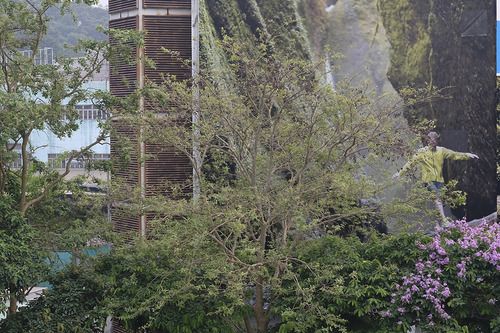
© Ng Sai Kit from the series ‘Recap of the Present’
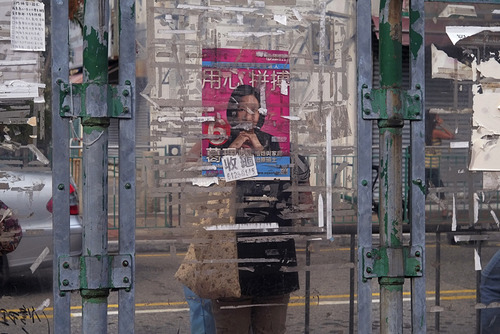
© Ng Sai Kit from the series ‘Recap of the Present’
Growing up, have you ever imagined being a photographic artist?
Nig Sai Kit (NK): I did not have fantasy about my future. I grew up in the 1970s and 80s, the era of economic takeoff in Hong Kong. My family, much like the majority of Hong Kongers, fought hard for a better living. I have a big family, just feeding and providing education to us kids were hard enough for my parents, we did not have the privilege and leisure to plan for our future. In addition, the education back then was not inspiring at all.
What is your first camera? What is your first memory with photography?
NK: When I was growing up, photography is a distanced and foreign concept to me. I have few family photos of me from my infancy until my school admission. My first camera was borrowed, I still vaguely remember that it was a portable rangefinder, possibly a Yashica. I took pictures to document my extra curricular activities in my secondary school with it. I was fairly proud of my photos for its colours and compositions that I would put them in a photo album. I had a good grasp of basic camera control from the start and got satisfaction from taking pictures and so I started to learn more about photography in my leisure time and became interested in it.
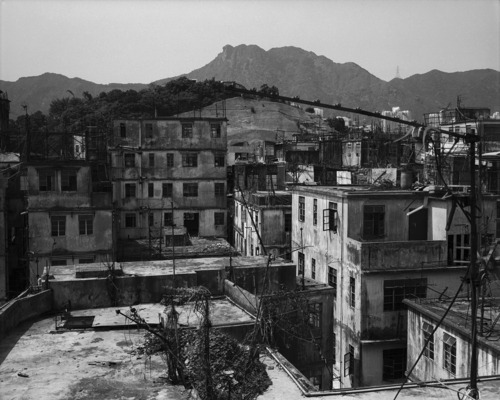
© Ng Sai Kit from the series 'Twin Peaks’
When did you start to see photography as an art form/ a way of expression?
NK: Photography was just a ‘sunday hobby’ to me. On holidays, I would follow photography clubs led by instructors to chase sunset and sunrise and photograph beautiful landscapes. I soon got annoyed by tedious routine and cliched landscape photographs. At the early 80s, I hear that Photo Center offered great courses and enrolled in two of its courses. Besides getting educated about basic camera techniques, I met my mentor, Ng Hon Lam, who opened my eye to photography. He was one of the few modest instructors who allowed open discussions on equal grounds. He inspired us with his experience and showed us that photography is not only an archiving equipment, it can also be a creative and expressive contemporary art. Under his leadership, I began express my perspective and observation through photography.
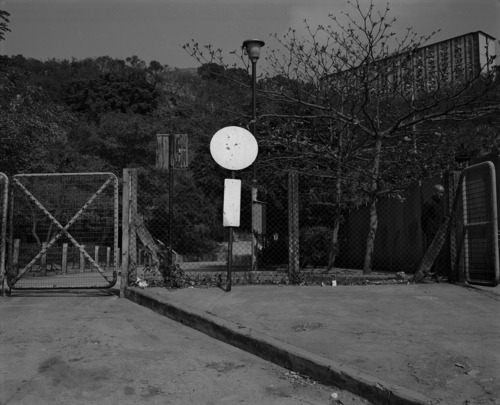
© Ng Sai Kit from the series 'Twin Peaks’
Is your art school training important to your photography?
NK: I have never had official training in art. I think art schools have their values. They provide contexts and clearer explanations for students to understand a concept, which cultivates a more effective communication between artists and viewers. I think both regular art schools trainings and self-study have their advantages and disadvantages. To me, I am open to art school education given the chance.
How is your research process?
NK: My series often start with an ambiguous idea, which I develop into a more complete concept and subsequently photographic images by wandering on the street and taking photos instead of dreaming it up in front of my computer. The interaction of my perspective with the real world, as well as my personal preferences, are the backbone of my artistic endeavour. My perspective and preference act as a unique filter of reality, while they may be altered by the external environment to develop new “pictures”. The more photos I take, the more I can deduce from them a certain concept or a way of seeing. When I review my old images, it occurs to me that the original scenes often did not have a particular point of view before being seen by me and captured on film. Thus, they became my own images. Through my interpretation, the myriad of images I encounter in contemporary society all have the potential of becoming my own. In a nutshell, I re-organize and reconstruct them in my own way, in turn giving them a new meaning. This is how I developed my series 'A Recap of the Present’.
What is your view on advertorial images and the use of photography in general?
It is an ambivalent relationship. The huge volume of visual images stimulate my vision frequently, it is suffocating and numb my senses. But they also are good motifs of my creation.
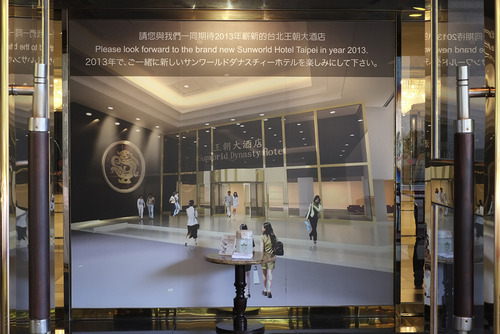
© Ng Sai Kit from the series 'Recap of the Present’
A lot of your projects, for example 'Instagram (faces)’, 'Decorated Landscape’ and now 'Recap of The Moment,’ communicate the experience of living in cities. How does Hong Kong inspire you artistically? Living in a city with such dense visual elements, does it influence your aesthetic and artistic thinking?
NK: Hong Kong is where I was born and grew up in. Home, is a feeling of kindness and closeness. In fact, I like the ‘design’ of this city, it steer towards functionality and utilitarianism. The design, however, does not necessarily satisfy the citizens’ needs. Because it lacks planning, the whole city landscape is messy, new and old architectures juxtapose each other, streets and space are complicated and capricious, especially those on the Hong Kong Island.
As said, I enjoy the interaction between my vision and the physical space, I am interested in establishing a new spacial order from chaos.
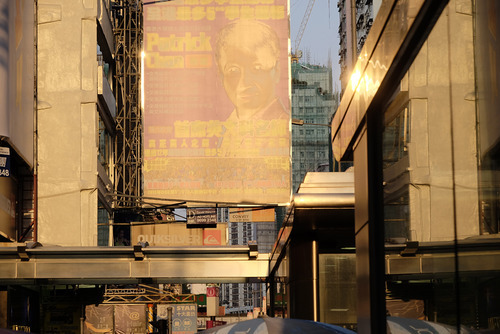
© Ng Sai Kit from the series 'Recap of the Present’
Are there any mentors, photographers or artists that you draw inspiration from?
NK: I believe that ‘a mental imagery unfolds as one travel through natural landscapes and urban sceneries’. My mentor, Ng Hon Lam, inspired and introduced me to modernist photographers such as Edward Weston,Minor White, Walker Evans,Eugene Atget,Manuel A Bravo, Josef Sudek and their successors Diane Arbus,Lewis Baltz,Lee Fredlander, Ralph Eugene Meatyard,Hans Bellmer,Raymond Moore,August Sander,Bernd and Hilla Becher as well as the photographers at the Dusseldorf School of Photography. Recently, I am inspired by George Rouses, Bernard Voita and Hiroshi Sugimoto. Morandi, Balthus and sculptor Giacometti are my favourite artists.
Any exhibition/ photo book/ photography project worth watching?
NK: I visited an exhibition of Hiroshi Sugimoto at the Xue Xue Institue in Taipei. Although it was not as spectacular as the show in Roppongi in Tokyo few years ago, fewer exhibited works, I like the exhibition. The selection of work, the use of space and the lighting are almost perfect. Another unforgettable exhibition is the Bernard Voita Show at Lausanne Olympic Park in Switzerland in 1987, it gave me a clear direction of my creative career in these 10 years.
As for photo book, I recommend ‘White Garden” by Bernard Voita and George Rouses self-titled photo book.
Who would you tag for the next interview?
NG: Lai Lon Hin.
---
LINKS
Ng Sai Kit
urbanautica China
share this page